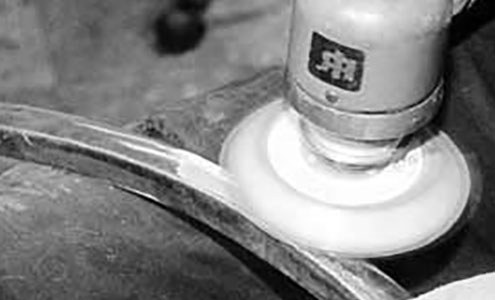I use an air-driven, dual-action, variable-speed sander with 3M’s gold stick-it paper. This paper is expensive, but it gives me the best results. Sometimes, I use transmission fluid as lubricant. It is messy, but it stretches out the life of the sandpaper. The 280-grit paper usually removes peaks caused by dent removal, light scratches and most pits. The real key is not to get the piece too hot. Heat causes thin and flat pieces (like rocker moldings) to warp.
Keep the sander moving. If the stainless begins to take on a darker color – the piece is getting too hot. A rule of thumb is: If the sandpaper catches on fire, your piece is getting too hot!
Pit removal can be difficult. You not only remove pits, but you also must remove surface material evenly across the piece. This is done to prevent a wavy appearance. If you simply concentrate your efforts on one area, you will cause a depression in that area. If you do not take off material evenly, you might get the pit out, but you’ll have caused a bigger problem.















